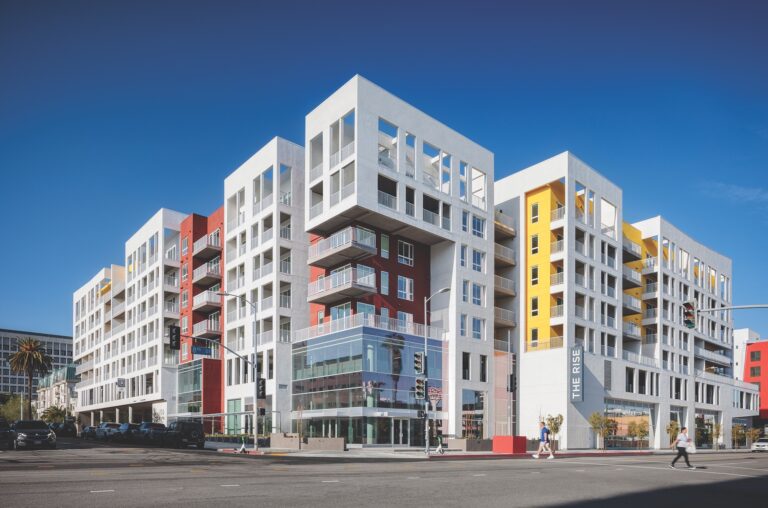
The Rise Koreatown, a seven-story, 688,000-square-foot mixed-use multifamily project in Koreatown, has completed its first phase of construction. The project was developed by Brentwood-based Cal-Coast Development Corp. and Rescore Property Corp., with architecture and design services from Sawtelle-based Nadel Architects.
The project has 363 apartment units, all of which have been completed. It also has a two-story fitness center, swimming pool and clubroom with a karaoke lounge, a virtual driving range, office space for those working from home, a dog lounge and more.
It is the project’s second phase, which includes retail, however, that Nadel said would really set it apart. It is expected to be completed in early 2024.
According to Anthony Sanchez, Nadel’s design director and principal, “Having that ground level dedicated to a retail component that allows for the public to interact with it — that’s not something you see too much in new construction around (Koreatown)… With regard to making a more livable community, you need that diversity in programming, which Rise Koreatown certainly brings.”
When the development is complete Design Director and Principal it will include will be 53,000 square feet of shops and market spaces. Asian grocery chain Zion Market is currently signed on as a tenant and will take up around 38,000 square feet of the space with the remaining area still being leased.
And according to Nadel, the Rise Koreatown is a part of larger trends in the community when it comes to the proliferation of multifamily units.
As Sanchez explained, the development of multifamily units in such an urban and dense part of the city makes sense from a development perspective, especially when one looks as the housing crisis that the city is facing.
This is happening specifically in Koreatown, though, some attribute to the wealth of Transit-Oriented-Community incentives available in the neighborhood. This means that in exchange for including affordable housing units close to public transportation stations, developers can ask for incentives such as fewer parking requirements or increased building height allowances.
“(Incentivization) plays a part in all of our multifamily projects,” Sanchez said. “From a planning standpoint, we look at things to see if what we will yield in any project and see if it makes sense or not (with the incentives).”
